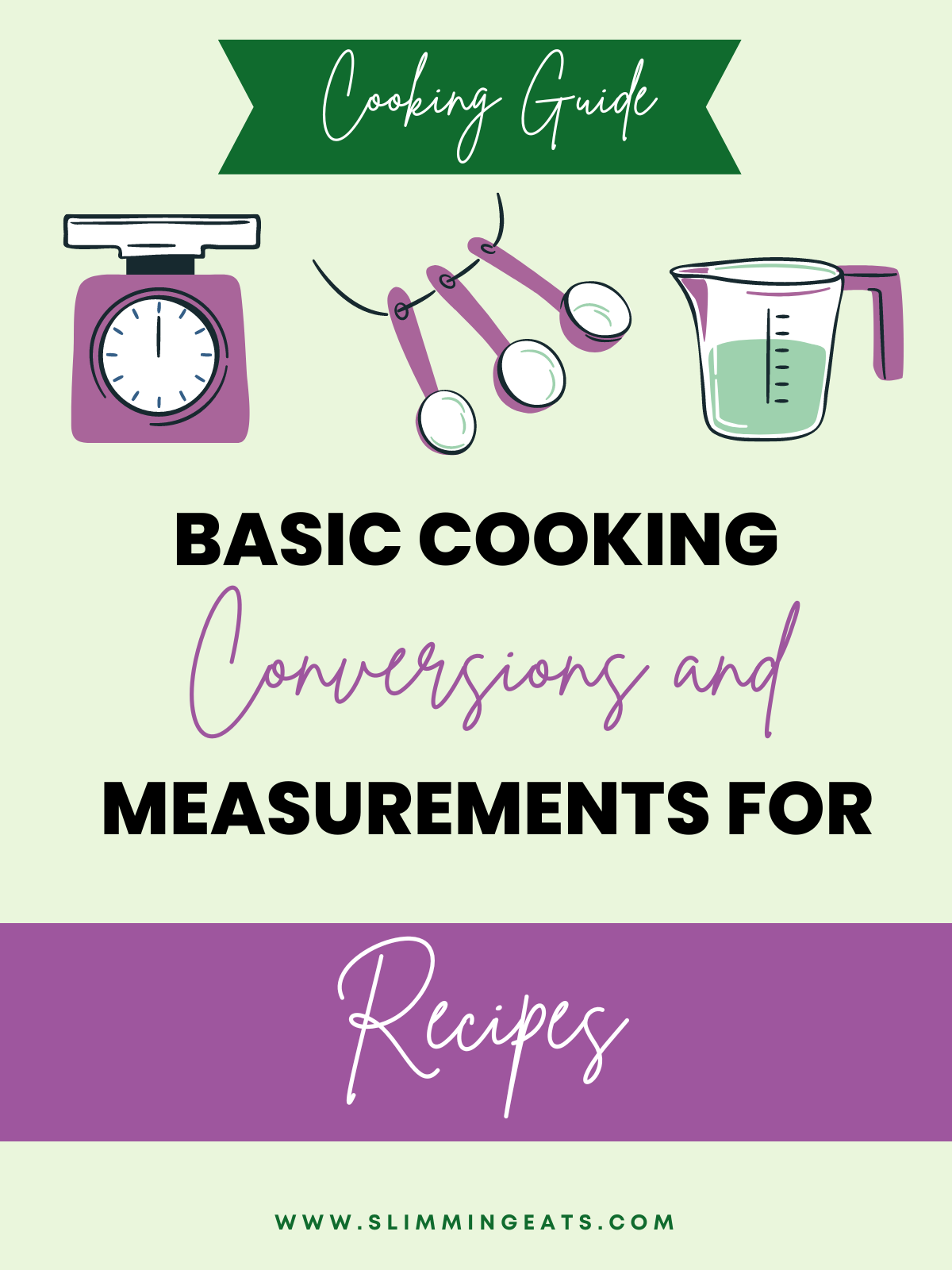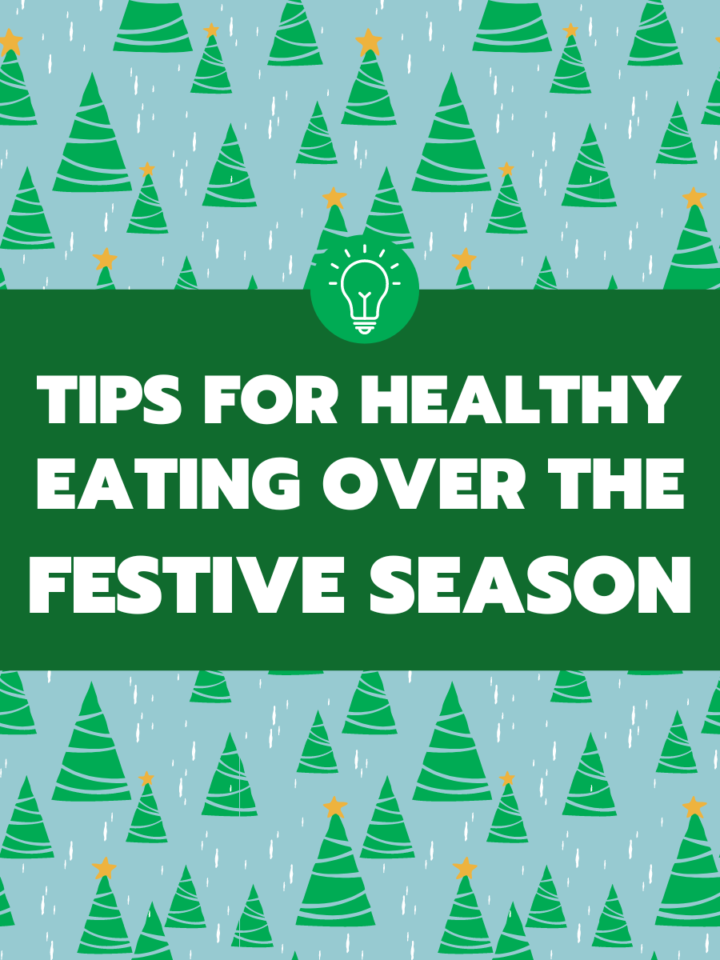Take your cooking skills to the next level with our useful guide on Basic Cooking Conversions and Measurements for Recipes. From cups to grams, tablespoons to teaspoons, our handy chart makes it easy to convert measurements and get perfect results in the kitchen. Whether you're a novice or an experienced cook, our guide is a must-have tool for every kitchen.

Have you ever come across a delicious recipe that you were eager to try, only to be stumped by unfamiliar ingredient measurements or oven temperatures? Converting recipes from one measurement system to another can be a headache, especially if you're not familiar with the different units used in various regions. But fear not, because with this Slimming Eats Cooking Conversion Chart for Recipes guide, you can easily adjust any recipe to suit your needs and cook with confidence in your kitchen.
Introduction
As someone who has moved from the UK to Canada, I have encountered many instances where I needed to convert recipes due to differences in measurement systems. For example, in the UK, we use metric measurements, while in Canada and the US, sometimes imperial measurements are more common. Additionally, oven temperatures are often given in Fahrenheit in the US, but in Celsius in many other countries. These conversions can quickly become overwhelming and frustrating, especially when you're in the middle of preparing a meal.
The Importance of a Cooking Conversion Chart
To help make your cooking experience smoother and more enjoyable, I have created a handy Cooking Conversion Chart for Recipes that includes oven temperature conversions for Fahrenheit, Celsius, and gas mark, as well as common ingredient measurements in both metric and imperial units. This comprehensive chart covers all the essential conversions you need to adapt any recipe to your preference and kitchen tools.
With my conversion chart on hand, you can easily convert a recipe that calls for 350°F to 180°C or vice versa, or convert 1 cup to milliliters depending on your measurement preference. No more standing in the kitchen feeling baffled and frustrated - you'll have all the information you need at your fingertips.
Here's some of the conversions you'll find covered in my handy chart and some things to note before you get started converting recipes.
- Oven Temperature Conversions: celsius, fahrenheit and gas mark
- Measuring Spoon to Milliliters: 1 tablespoon = 15ml
- Cups to Milliliters: 1 cup = 240 mL
- Ounces to Grams: 1 ounce = 28 grams
- Pounds to Grams: 1 pound = 454 grams
Having these conversions readily available can save you time, effort, and frustration in the kitchen. No more guessing or approximating - you can confidently convert any recipe to suit your needs and preferences. Plus, having a printable chart on hand makes it easy to refer to whenever you need it, without having to search the internet or flip through cookbooks.
Cooking Measurement Abbreviations
Sometimes a recipe may use an abbreviation for a measurement, so it's important to get familiar with the common abbreviations out there, so you don't use the wrong measurement in a recipe.
Here are the most common:
| teaspoon | teaspoon |
| tablespoon | tbsp/tbs |
| oz | oz |
| gram | g |
| fluid oz | fl oz |
| pound | 1lb |
| kilogram | kg |
| milliter | ml |
| litre | l |
| cup | c |
| quart | qt |
| gallon | gl |
| pint | pt |
Measuring Accurately
It's important to note that when following recipes, using proper measuring spoons and cups is crucial. Regular cutlery spoons or teacups may not provide accurate measurements, as they can vary in size. Always level off your spoon or cup when measuring, and avoid heaping ingredients. For instance, if a recipe calls for a tablespoon of an ingredient, using a heaping spoonful could result in using twice as much, leading to increased calorie intake. This is especially significant for ingredients such as sugar, butter, oils, peanut butter, and spreads, which can contribute significantly to calorie intake. Therefore, it's essential to be precise with measurements to ensure accurate results in your cooking and baking endeavors.
Dry Ingredients versus Liquid Ingredients
Converting cup measurements for non-liquid ingredients can be challenging. Unlike liquids like passata or milk, which convert directly to 240g for 1 cup (240ml), the same conversion does not apply to solids such as rice, flour, sugar, etc. This is because the weight of solid ingredients can vary depending on factors like density, moisture content, and how they are packed into the cup. It's crucial to be mindful of these differences, as inaccurate calculations can lead to disastrous results in a recipe.
For instance, different types of rice, such as long-grain, short-grain, or basmati, can have different densities and weights. The moisture content of rice can also affect its weight, as rice can absorb or lose moisture depending on its storage conditions. Additionally, the way rice is packed into the measuring cup can impact its weight. If the rice is loosely packed, it may weigh less, while tightly packed rice may weigh more.
To ensure accuracy if you are trying to convert a recipe that using cup measurements instead of grams/oz, is to use a measuring jug with milliliter (ml) markings and measure by volume in milliliters instead of grams. This can help account for the variations in weight for different solid ingredients when trying to convert a recipe, most websites tender to give both imperial and metric measurements on a recipe, but knowing how to adapt if not can be useful.
While cup measurements can be convenient, there is room for error depending on how loosely or tightly one packs the cup. This discrepancy may not significantly impact a soup recipe, but in baking, where precise measurements are crucial for success, it's important to be as accurate as possible.
By being mindful of the unique characteristics of solid ingredients and using appropriate measuring tools, you can avoid mistakes and achieve better results in your recipes. Precision in measuring can make a significant difference in the outcome of your culinary creations, especially when it comes to delicate baking recipes that require exact measurements for perfect results.
Different Types of Measuring Tools
There are various tools for measuring ingredients such as:
- Measuring Cups and Spoons
- Measuring Jug
- Kitchen Scales
Most of these different measuring tools are available worldwide now, so even if you typically weigh by a preferred method, it's useful to have the other on hand incase you come across a recipe you really want to try that doesn't have a conversion.
Tips for Successful Recipe Conversions:
In addition to the oven temperature and ingredient measurement conversions, here are some additional tips and advice to keep in mind when using a Cooking Conversion Chart for Recipes:
- Be precise with measurements: Converting recipes often requires precise measurements, especially when it comes to baking. Invest in a good quality kitchen scale and measuring tools to ensure accurate conversions. Avoid approximations as they can affect the final outcome of your dish.
- Double-check conversions: When using a conversion chart, always double-check your conversions to avoid mistakes. Transpose the numbers correctly and verify the conversions using multiple sources if possible. It's better to be safe than sorry, especially when it comes to baking where accuracy is crucial.
- Take note of ingredient density: Different ingredients have different densities, which can affect their weight or volume. For example, a cup of flour weighs differently than a cup of sugar. Be mindful of ingredient density when converting measurements, and use weight measurements whenever possible for better accuracy.
- Consider cultural differences: Recipes from different regions may use different measurement systems or ingredient names. For example, a "stick" of butter in the US is equivalent to ½ cup or 8 tablespoons, while in other countries, butter is often sold in grams or kilograms. Familiarize yourself with the local measurement systems and ingredient names to avoid confusion.
- Practice and adjust to taste: Converting recipes can sometimes involve trial and error. Don't be afraid to adjust the measurements to suit your taste preferences. Cooking is an art, and recipes are meant to be adapted to your liking. Keep notes of your adjustments for future reference.
- Practice food safety: Along with conversions, it's important to follow food safety guidelines in your kitchen. Ensure that meats are cooked to safe internal temperatures, practice proper food handling and storage, and be cautious of cross-contamination. Food safety should always be a top priority in your culinary endeavors.
- Have a backup plan: If you're trying a new recipe with conversions for the first time, it's a good idea to have a backup plan in case things don't turn out as expected. Have some extra ingredients on hand, be prepared to make adjustments, and don't be discouraged if the dish doesn't turn out perfectly on your first attempt. Cooking is a skill that improves with practice.
In conclusion, a Cooking Conversion Chart for Recipes can be a valuable tool in your kitchen to help you confidently adapt recipes to your measurement preference and kitchen tools. By being precise, double-checking conversions, considering ingredient density, and practicing food safety, you can successfully convert recipes and create delicious meals that suit your taste. Happy cooking and experimenting with new recipes!
Slimming Eats Cooking Conversions
Metric to Measuring Spoons
| Metric | Measuring Spoons |
|---|---|
| 1.25ml | ¼ teaspoon |
| 2.5ml | ½ teaspoon |
| 5ml | 1 teaspoon |
| 15ml | 1 tablespoon or 3 teaspoons |
Metric to Measuring Cups
| Metric | Measuring Cups |
|---|---|
| 60ml | ¼ cup or 4 tablespoons |
| 80ml | ⅓ cup |
| 120ml | ½ cup or 8 tablespoons |
| 240ml | 1 cup or 16 tablespoons |
Metric versus Imperial
| Metric | Imperial |
|---|---|
| 7 grams | ¼ ounce |
| 14 grams | ½ ounce |
| 28 grams | 1 ounce |
| 57 grams | 2 ounces |
| 113 grams | 4 ounces (¼ lb) |
| 170 gram | 6 ounces |
| 227 grams | 8 ounces (½ lb) |
| 454 grams | 16 ounces (1 lb) |
| 907 grams | 32 ounces (2lb) |
Oven Temps
| Fan Celsus | Celsius | Fahrenheit | Gas Mark |
|---|---|---|---|
| 120 ° C | 140 ° C | 275 ° F | 1 |
| 130 ° C | 150 ° C | 300 ° F | 2 |
| 150 ° C | 170 ° C | 325 ° F | 3 |
| 160 ° C | 180 ° C | 350 ° F | 4 |
| 170 ° C | 190 ° C | 375 ° F | 5 |
| 180 ° C | 200 ° C | 400 ° F | 6 |
| 200 ° C | 220 ° C | 425 ° F | 7 |
| 210 ° C | 230 ° C | 450 ° F | 8 |
| 220 ° C | 240 ° C | 475 ° F | 9 |
| 240 ° C | 260 ° C | 500 ° F | 10 |
Slimming Eats Cooking Conversion Chart
So, whether you're a seasoned cook or a novice in the kitchen, my Cooking Conversion Chart for Recipes is a valuable tool to have in your culinary arsenal. With the right tools and this handy chart, you'll be able to confidently tackle any recipe, no matter where it's from or what measurement system it uses.






Leave a Reply